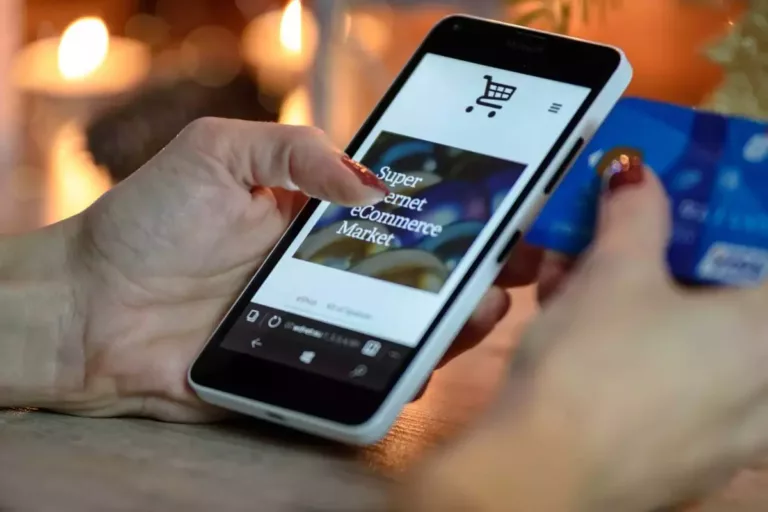The COVID-19 crisis is likely to have long-lasting effects on e-commerce.
There has been a shift in demand from brick-and-mortar retail to e-commerce.
According to OECD, the COVID-19 crisis has led people in many OECD countries to significantly limit physical interactions. Self-imposed social distancing to avoid contagion, together with the strict confinement measures implemented in many OECD countries, have put a large share of traditional brick-and-mortar retail virtually on hold, at least temporarily. In the United States, retail and food services sales between February and April 2020 were down 7.7% compared to the same period in 2019. However, sales increased for grocery stores and non-store retailers (mostly e-commerce providers),1 by 16% and 14.8% respectively. In the EU-27,2 retail sales via mail order houses or the Internet in April 2020 increased by 30% compared to April 2019, while total retail sales diminished by 17.9% (Figure 1). The resulting shifts from brick-and-mortar retail to e-commerce are likely significant across countries.
Figure 1. The COVID-19 crisis has increased the share of e-commerce in total retail

We can see that the ecommerce industry is proliferating. Every day, more retailers are making the move to online selling, while entrepreneurs are getting their start through ecommerce ventures.
By 2022, e-retail revenues will grow to $6.54 trillion, up from $3.53 trillion in 2019.
However, ecommerce is an ever-changing industry. Every year, several new trends come up that can help your business grow and outdo your competitors – 2021 is no different.
1. Voice Commerce Will Rise
People are increasingly relying on voice assistant devices like the Amazon Echo with Alexa and the Google Home with Google Assistant to do everything, from waking them to buying products online. 75% of U.S. households will have smart speakers by 2025. Voice commerce sales are anticipated to reach $40 billion by 2022.
Another reason why voice commerce is on the rise is the growing accuracy and convenience of the technology. Both Google and Amazon are pushing regional languages in their virtual assistant devices to help consumers shop more conveniently.
2. Omnichannel Shopping Will Become the New Normal
Omnichannel retailing refers to providing shoppers a seamless and consistent experience across channels and devices.
In a survey by HBR (Harvard Business Review), 73% of respondents said they use multiple channels during their shopping journey. This data is almost four years old.
With the increase in the adoption of mobile devices and voice assistants, I can only imagine that the number of omnichannel customers will increase even more in 2021.
Use analytics tools like Finteza that provide detailed ecommerce analytics to identify customer behaviors and track everything related to the cash flow. An analytics tool of this type helps you analyze which products are in demand, monitor your profit and loss, and evaluate customer loyalty. Finteza also allows you to build reports for events that matter the most to your business, such as view items, add to cart, checkout progress, and checkout success.
These insights enable you to offer the exact product that your shoppers are looking for and provide a seamless shopping experience.
Here are some more ways for you to offer a seamless omnichannel experience.
- Optimize your website for mobile devices (make your website store responsive on every device). If you have the budget, then create a mobile app or a PWA.
- Personalize the customer experience at every step possible.
- Use tools to ensure a personalized and comprehensive ecommerce experience with end-to-end online retail processes.
- Offer various purchase options, such as
- Buy online, pick up in-store
- Buy in-store, choose home delivery
- Buy online, get doorstep delivery
3. New Payment Options
Payment options are one of the main reasons why customers choose a specific brand. If you don’t offer your customers’ preferred payment method, they won’t purchase from your ecommerce store.
As of now, most eCommerce businesses accept digital wallets (like Google Pay, Samsung or Apple Pay, and PayPal) apart from debit and credit cards. Cryptocurrencies, especially Bitcoin, have many benefits for online shop owners, such as low transaction fees and no reverse transactions.
For example, Overstock partnered with Coinbase, a Bitcoin platform, to allow customers to use Bitcoin as a payment method.
In 2021, we might see more ecommerce businesses will start accepting cryptocurrencies for transactions.
4. Mobile Commerce Will Dominate Ecommerce
As consumers’ trust in online shopping increases, they feel more comfortable making purchases using their mobile devices.
By the end of 2021, mobile devices are expected to make almost 73% of total eCommerce sales. Besides, 30% of online shoppers are likely to abandon their carts in the middle of shopping if they find out that your website is not mobile-friendly.
As an online seller, you should focus on improving the customer experience for mobile users.
Here are some great ways to prepare your ecommerce site for mobile devices:
- Examine your website for mobile-friendliness using Google Mobile-Friendly Test. Enter your URL in the tool, and it will show if your online store is responsive. It also shows if there are any loading issues on your website.
- Create a progressive web app (PWA) for your online store. PWA’s load faster than a website and allow customers to view pages that they have previously browsed without the internet.
- Implement accelerated mobile pages (AMP) for shoppers who visit your site using smartphones.
- Ensure a smooth checkout process on mobile devices and find ways to simplify it further.
- Test your mobile site manually. Check if it is easy to navigate. Examine if it is easy to view products on your mobile and if there is an option to zoom.
5. Visual Commerce
Visual commerce refers to using imagery not just on product pages, but also on your entire store to entice users to engage and convert.
Major retailers like Bose, for example, are already using visual commerce to influence shoppers into purchasing. They have high-quality images on their homepage along with shortcuts to purchase the product directly.
- Change your default products from JPG to JPEG2000 or WebP formats to improve quality and loading speed.
- Create 360-degree images or videos of your top-selling products.
- Invest in a visual search tool to allow customers to search for products using images.
- Repurpose user-generated content on your product pages to generate interests.
- Create visual shopping ads on Pinterest to drive traffic to your website and increase sales.
Final Thoughts
Ecommerce is a booming trend that it´s here to stay. But we must warn you that any eCommerce business should be approached as a BUSINESS, not a hobby. It needs investment and a professional team. We can help you convert your ideas into a profitable business. Don´t hesitate to contact us.





